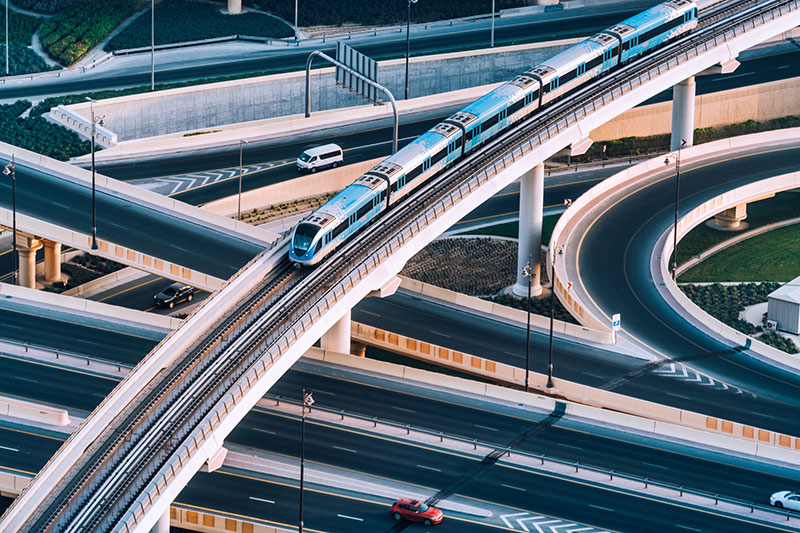AAR report highlights ways in which railroads can play a key role in facing climate change

Being a freight transportation mode that is well-known for its sustainability advantages, the freight railroad (and intermodal, by extension) sector is strongly positioned, when it comes to staving off the ongoing effects of climate change.
Industry stakeholders have, for years, referenced the environmental impacts that railroads provide, in this statistic: rail can move one ton of freight nearly 500 miles on a single gallon of fuel. That was true years ago and remains true today, too. And it serves as a thesis, of sorts, in a new report issued by the Washington, D.C.-based Association of American Railroads, entitled “Freight Railroads & Climate Change: Reducing Emissions, Enhancing Resiliency.”
The report addresses the myriad ways in which smart, pro-innovation federal policies can be instrumental in driving the railroad industry to take on climate change. What’s more, this report follows the White House’s joint agency transportation decarbonization blueprint released earlier this year, which observed that “rail makes up approximately 28% of U.S. freight movement by ton-miles but only accounts for 1.7% of transportation emissions.”
That statistic looks even more impressive, when considering the transportation emissions for other modes, including: cars, at 58.5%; trucking, at 23.4%; aircraft, at 8.5%; pipelines, at 3.5%; and waterborne, at 2.0%.
The report also observed that several Class I railroads were included on a list of he 100 U.S. companies that are best-positioned to reach net-zero by 2050.
And AAR laid out key objectives it wants to see Congress address, which it described as “a framework of economically grounded solutions to support rail and the nation’s progress towards lower-or-zero-carbon choices,” including:
- supporting low- and zero-emissions locomotive research;
- helping railroad partners decarbonize;
allowing railroads to transition their locomotive fleets when zero-emission technologies are commercially viable as well as operationally safe and reliable; - pursuing policies that recognize the value of rail as a low-carbon transportation solution;
empowering railroads to make operational decisions to maximize fuel usage and meet growing freight demand; - further promoting a broad-based, economy-wide transition to net-zero emissions;
- encouraging testing of new safety technologies; and
- embracing permitting reform
“The need to reduce emissions is not only an environmental issue; it’s an economic issue,” said AAR President and CEO Ian Jefferies. “This has never been more clear. Policymakers must engage in partnership with the private sector to advance pragmatic, solutions-oriented policies that support immediate emissions reductions and encourage longer-term, sustainable solutions. As the most efficient way to move freight over land, rail is a critical partner in driving further gains.”
The freight railroad sector has long been well-positioned to take a leading role in facing the challenges created by the ongoing effects of climate change. What happens from here, in terms of how things progress on the legislative front, remains to be seen, but this paper provides a very strong launching-off point.

Article Topics
Rail & Intermodal News & Resources
U.S. rail carload and intermodal volumes are mixed in April, reports AAR Q1 intermodal volumes are up for second straight quarter, reports IANA 2024 State of Freight Forwarders: What’s next is happening now STB announces adoption of final reciprocal switching rules Norfolk Southern-Ancora Holdings proxy battle accelerates Intermodal growth volume remains intact in March, reports IANA Shipment and expenditure decreases trend down, notes Cass Freight Index More Rail & IntermodalLatest in Logistics
April Services PMI contracts after 15 months of growth, reports ISM 2023 industrial big-box leasing activity heads down but remains on a steady path, notes CBRE report U.S. rail carload and intermodal volumes are mixed in April, reports AAR Q1 U.S. Bank Freight Payment Index sees shipment and spending declines S&P Global Market Intelligence’s Rogers assesses 2024 import landscape Pitt Ohio exec warns Congress to go slow on truck electrification mandates Q1 intermodal volumes are up for second straight quarter, reports IANA More LogisticsAbout the Author
Subscribe to Logistics Management Magazine

Find out what the world's most innovative companies are doing to improve productivity in their plants and distribution centers.
Start your FREE subscription today.
May 2024 Logistics Management

Latest Resources














